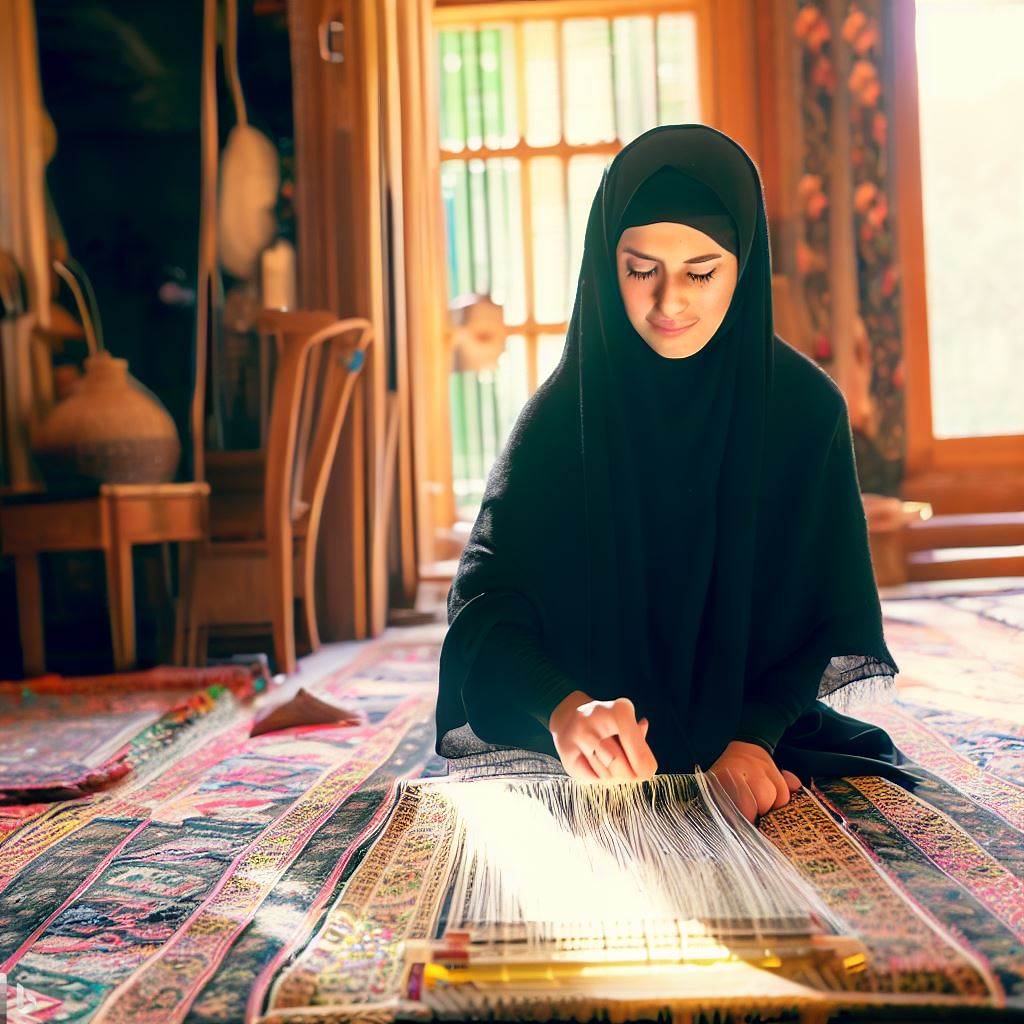The Joy of Rug Making: Crafting Cozy and Decorative Rugs
Few pastimes prove as gratifying as planning and producing unique handcrafted rugs to adorn one’s home. Rug making offers avenues for creative problem solving, legacy skills building, and sustainable artistry transforming recycled textiles into tapestries. The tangible result provides cozy comfort underfoot along with eye-catching artistry sure to draw admiration. With techniques spanning traditional loom weaving to latch hooking using old clothes, rug crafting invites imaginative recycling. The entire relaxing journey from conceptual sketches to snipping final threads thrills the hand, heart, and mind alike.
Rug Design and Planning Inspiration
Deciding on a style, size, colors, and purpose for a rug establishes essential parameters to guide planning and execution.
Gathering Inspiring Images
Browse global rug designs across styles to discover pleasing layouts, motifs, color palettes, and textures worth emulating. Curate a vision board.
Determining Placement and Purpose
Final placement like bedroom, entryway, or living room determines what size and style suits the space best. Decorate to coordinate with intended decor.
Material Considerations
Factor in if rug receives heavy traffic or spills. Wool makes durable, stain resistant rugs. Delicate silks suit wall displays. Purpose affects material logic.
Personalization Possibilities
Incorporate meaningful symbols, motifs from your cultural background, favorite hobbies, monograms, or color preferences to make the rug uniquely yours.
Embracing Imperfection
Unless skilled at rug weaving, embrace some charming imperfections. Rugs gain character when not overly refined. Beginner flaws show patience conquering challenges.
Loom Weaving Techniques for Rug Makers
While slow paced, traditional floor loom weaving grants unrivaled versatility in intricate patterning possibilities.
Warping the Loom
Measuring out hundreds of warp threads then meticulously threading each through the loom demands care and focus to establish the foundation.
Alternating the Sheds
Using foot pedals, the weaver shifts alternating warp thread sets forward and back to create the opening called the shed where weft threads pass through.
Picking Patterns
Varying which warps get raised during shedding allows detailed motifs to emerge row by row. Pick up sticks aid complex designs.
Interlacing Warps and Wefts
The interlocking of weft and wrap threads transforms from chaos into orderly ridges. Beating after each pass consolidates the structure.
Binding and Fringing
After weaving, enclosing sides with plied yarn or cloth binding finishes edges neatly. Warp fringe on both ends adds flair.
Punch Needle Rug Embroidery
This rapid stitching tool pierces monk’s cloth backing to render designs in charming high and low looped pile textures.
Securing Taut Monk’s Cloth
First stretch plain monk’s cloth backing over a rug frame or staple into taut wooden stretcher bars like artists’ canvas to prevent buckling.
Transferring or Freehanding Designs
Use vanishing ink to trace designs, stencils to punch through, or improvise motifs by simply punching freehand directly into the monk’s cloth.
Adjusting Loop Pile Height
Control how far down into the monk’s cloth backing you punch the needle to create areas of low scruffy loops or tall shaggy piles across the design.
Outlining Shapes First
Outline larger motifs before filling in background areas for best defined edges. Changing yarn colors helps distinguish forms.
Shearing Excess Loops
Once the design fills in, shear loops evenly with scissors for consistent finishing. Fringe ends optional.
Upcycling Old Clothes into Rugs
Salvaging worn out or damaged clothing and linens to hook into rugs saves textiles from landfills while making them into treasures.
Preparing Rug Canvas or Burlap
Stretch canvas or burlap backings over frames and melt cut edges with a lighter to prevent fraying while hooking strips through the weave.
Cutting Clothing into Strips
Turn old T-shirts, jeans, dresses, neckties, blankets, and curtains into strips about 1/4-1/2 inch wide using a rotary cutter.
Drawing Looped Patterns
Use a latch hook tool to draw fabric strips up through the burlap or rug canvas base following traced patterns row by row until filled in.
Tying Approaches
As an alternative, tie the fabric strips onto rug canvas grids in motifs using square knots, much like tying a quilt.
Get Creative with Color and Texture
Play with combining contrasting hues and varied fabrics like silky ties and chunky sweaters for dynamic upcycled rugs full of personality.
Handmade Rugs that Nourish the Soul
Beyond beautifying floors and walls, crafting rugs from scratch or cast-off clothes rewards makers intrinsically through purposeful creativity, legacy skills honoring, and resourceful sustainability. Imagining, planning, and producing these woven works of art never fails to renew inner spirit when the process comes from the heart. May the rugs underfoot over time trace this joyful journey of imagination made tactile.
